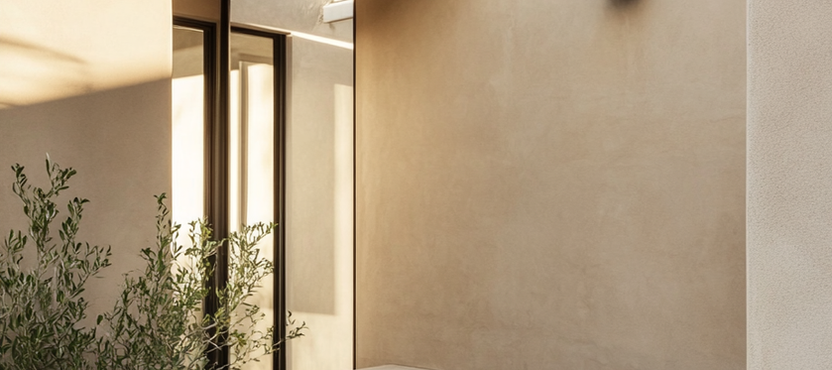5 Crucial Rules of Scale: Why Your Home Feels ‘Off’ (And How to Fix It)
- Beril Yilmaz

- Feb 10
- 4 min read
Ever walked into a room that just felt wrong, but you couldn’t quite figure out why? Maybe the furniture looked out of place, or the decor felt too overwhelming (or underwhelming). The likely culprit? Scale.
Scale is one of the most overlooked yet powerful principles of interior design. It dictates how objects relate to each other in size and proportion, ultimately shaping how a space feels. Without proper attention to scale, a room can feel awkward, cluttered, or strangely empty—no matter how beautiful your decor is.
The good news? You don’t need to be an interior designer to master scale. By following these 5 crucial rules of scale, you can transform your home into a visually balanced, well-proportioned space that just feels right.
1. 5 Crucial Rules of Scale: The Rule of Proportion

Proportion is the backbone of scale. It’s all about how objects in a room relate to one another in terms of size. Get this wrong, and the entire room feels off. A massive sectional sofa in a tiny living room? Overpowering. A tiny coffee table in a large seating area? It’ll look lost.
To maintain proportion, use the 2:3 rule—a general guideline that suggests larger furniture should be about two-thirds the size of the area it occupies. For example:
A coffee table should be roughly two-thirds the length of your sofa.
A dining table should take up about two-thirds of the room’s width.
A bed should occupy two-thirds of the bedroom width for optimal balance.
This rule keeps the proportions of your space harmonious and visually appealing.
2. 5 Crucial Rules of Scale: The Power of Layering Heights

Scale isn’t just about width and length—it’s also about height. If everything in a room is at the same level, the space will feel flat and uninspired.
The key? Layering different heights to create movement and depth. Here’s how:
Mix low-slung furniture with taller pieces like bookshelves or statement floor lamps.
Use varied artwork placement—hang some pieces higher and others lower to avoid monotony.
Play with ceiling heights. If you have high ceilings, opt for taller furniture and dramatic chandeliers. For lower ceilings, stick with sleek, low-profile pieces to keep things in proportion.
By adding height variation, you create a more dynamic and engaging space that naturally draws the eye.
3. 5 Crucial Rules of Scale: Mind the Negative Space

Too much furniture and decor can suffocate a room. Too little, and it feels barren. The secret to getting scale right? Let your space breathe.
Negative space (the empty areas around and between furniture) is just as important as the objects themselves. Here’s why:
It prevents visual clutter, making a room feel open and airy.
It allows statement pieces to stand out rather than compete for attention.
It creates a sense of flow, making a space more inviting and comfortable.
A quick trick: When placing furniture, make sure there’s enough space to walk comfortably between pieces—typically around 30-36 inches for main walkways. And don’t feel the need to cover every wall or surface with decor. Sometimes, less is more.
4. 5 Crucial Rules of Scale: The Impact of Pattern and Texture

Scale isn’t just about furniture—it applies to patterns and textures too. If you overload a room with large-scale prints or chunky textures, it can feel overwhelming. On the other hand, if everything is small and delicate, the space may feel underwhelming.
Here’s how to balance pattern and texture:
Mix large, medium, and small-scale prints for visual interest. For example, pair a bold patterned rug with smaller, more subtle prints on pillows or curtains.
Combine different textures (like smooth leather, soft linen, and rough wood) to create depth without overwhelming the space.
Avoid using the same pattern size across all decor elements—it flattens the design.
The right balance of patterns and textures enhances the room’s overall scale and keeps things visually dynamic.
5. 5 Crucial Rules of Scale: Choosing the Right Rug Size

One of the biggest scale mistakes? Choosing the wrong rug size. A too-small rug makes a room feel disjointed, while a too-large one can overwhelm the space.
Here’s a simple rule: The rug should be large enough to fit at least the front legs of all furniture pieces in a seating area.
Some general rug-sizing guidelines:
Living room: A rug should extend at least 6-12 inches beyond the edges of your sofa.
Dining room: The rug should be big enough so that all chair legs remain on it when pulled out.
Bedroom: A rug should extend at least 18-24 inches beyond the bed on all sides.
Get this right, and your space will instantly feel more polished and well-proportioned.
FAQs About Scale in Interior Design
Q: How do I know if my furniture is the right scale for my room?
A: A simple trick is to tape out the dimensions of furniture on the floor before purchasing. This helps you visualize how the piece will fit in your space.
Q: Can I mix different furniture styles and still maintain scale?
A: Absolutely! Just ensure the proportions complement each other. If one piece is oversized, balance it with a few equally bold pieces rather than mixing it with tiny furniture.
Q: How do I fix a room that already feels unbalanced?
A: Start by assessing the biggest offenders—oversized or undersized furniture. Adjust proportions by swapping pieces, adding height variation, or incorporating negative space.
Need Help Getting Scale Right?
Getting scale right isn’t always easy, but that’s where we come in. BY Design And Viz specializes in interior and exterior architectural design that ensures every element is perfectly proportioned for a cohesive, stunning space.
Whether you need a full home redesign or just a little guidance, our expert designers are here to help. Let’s bring your vision to life with impeccable balance and style.


































